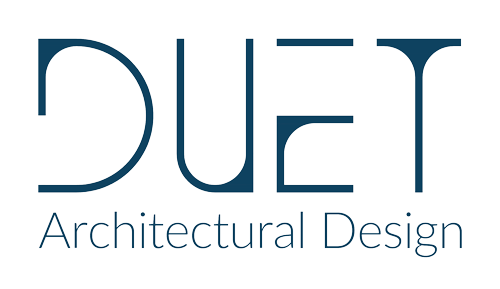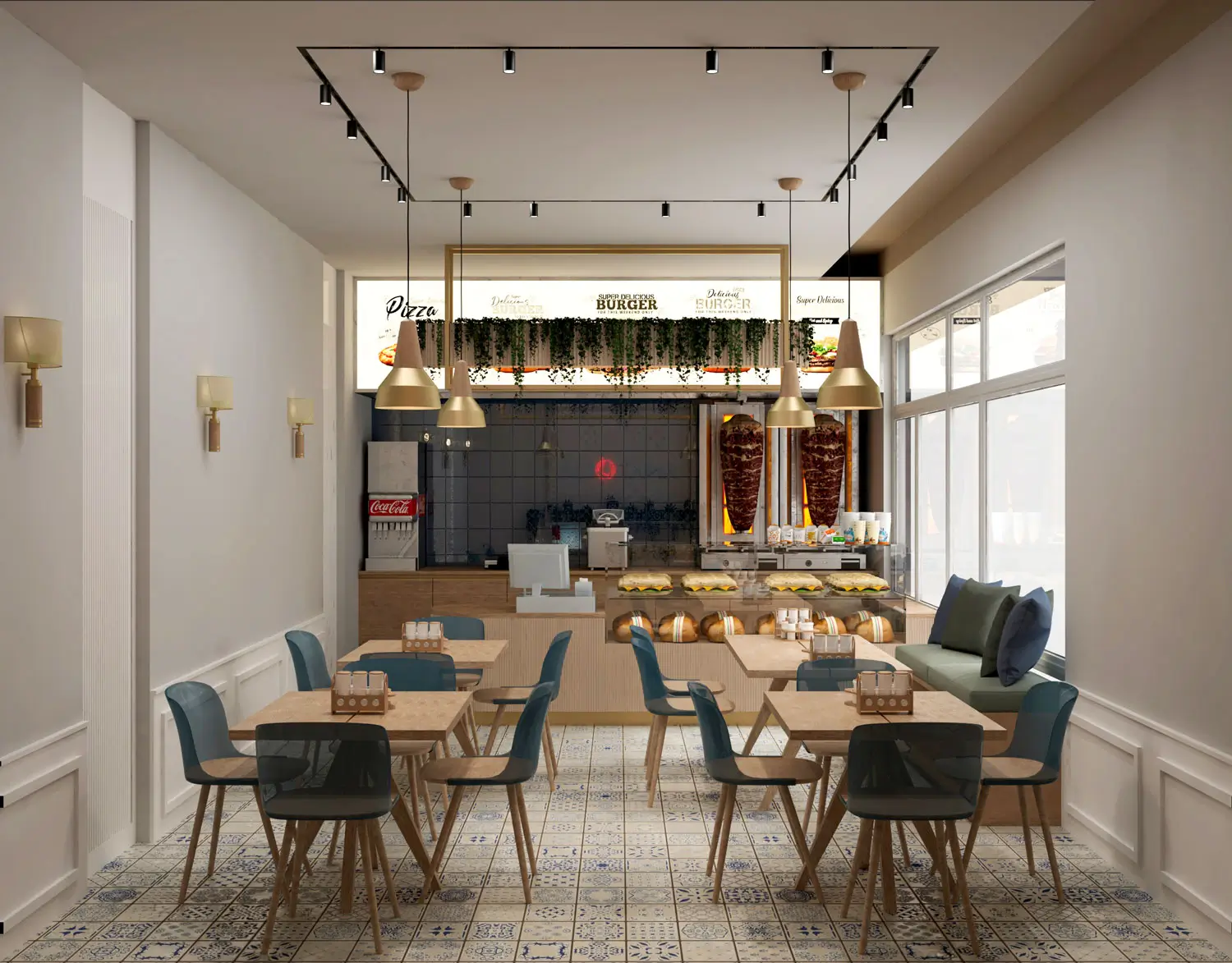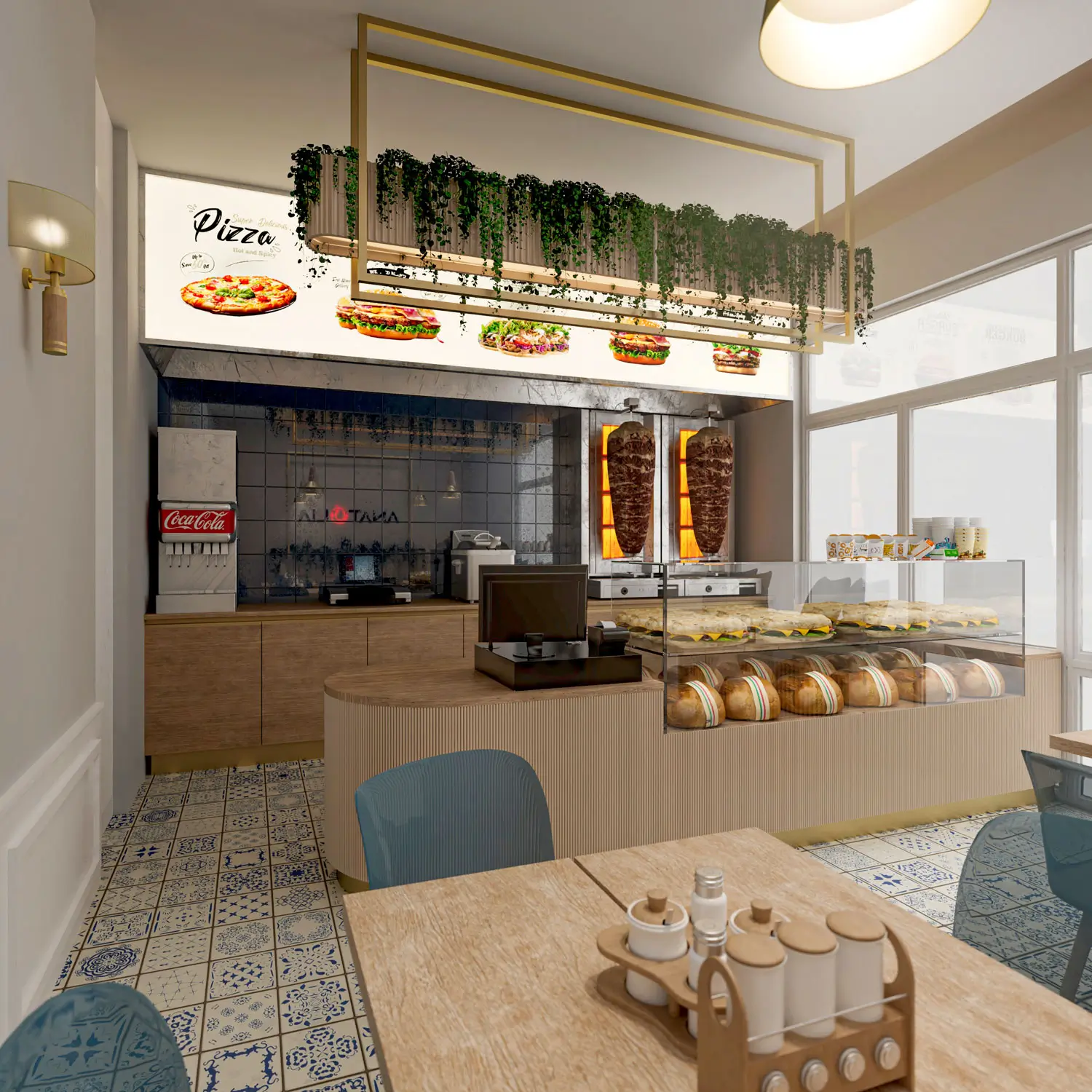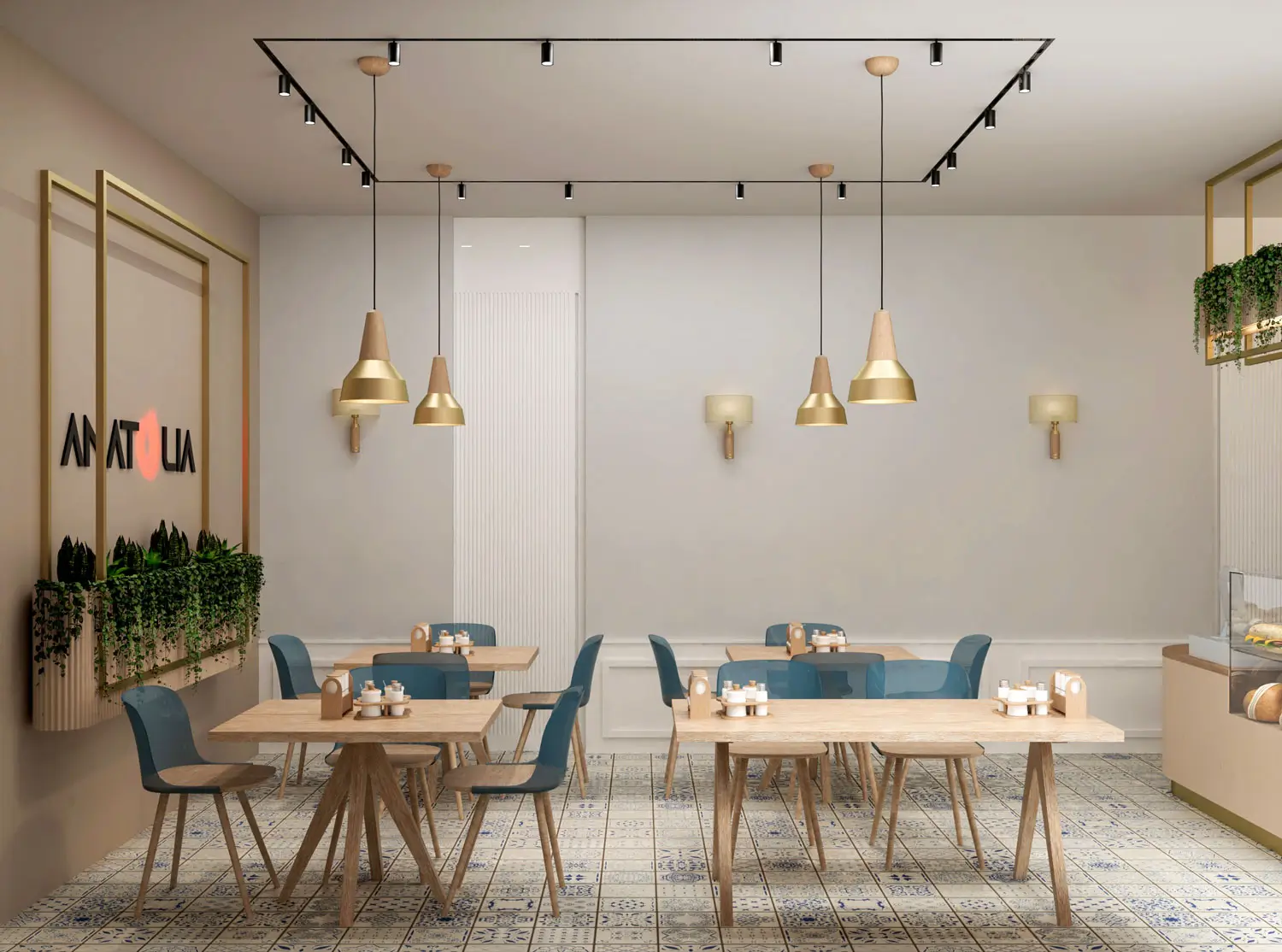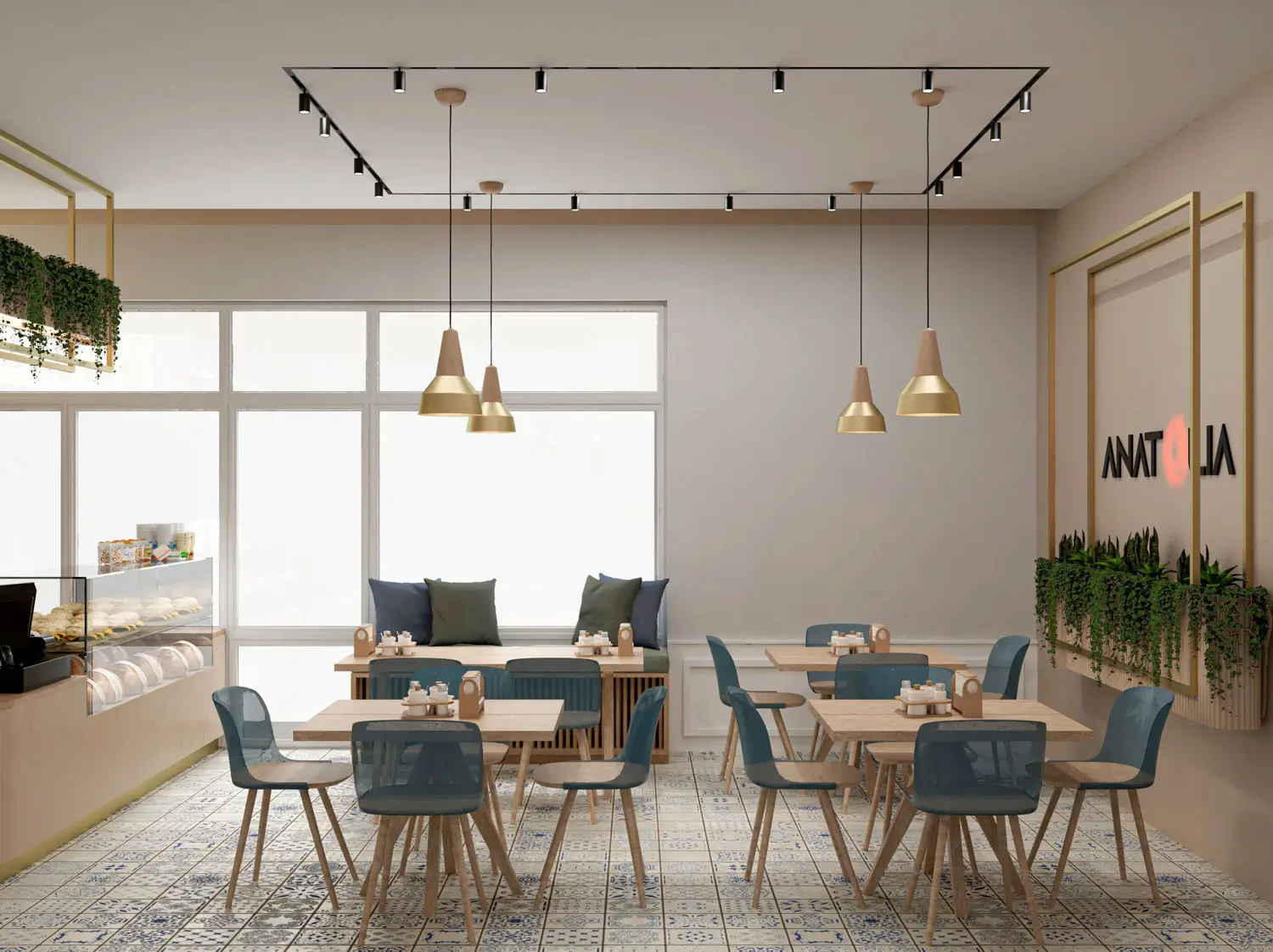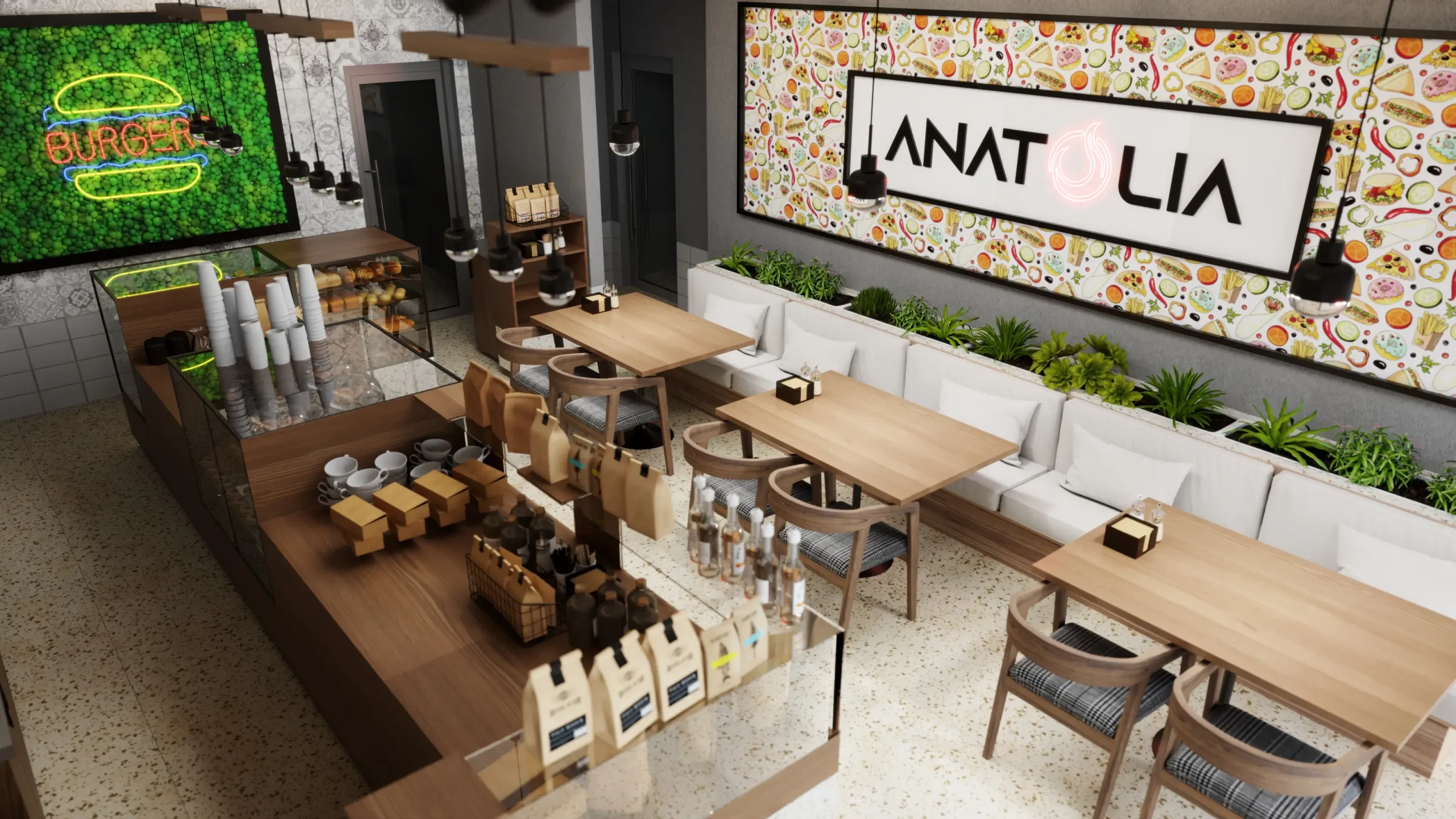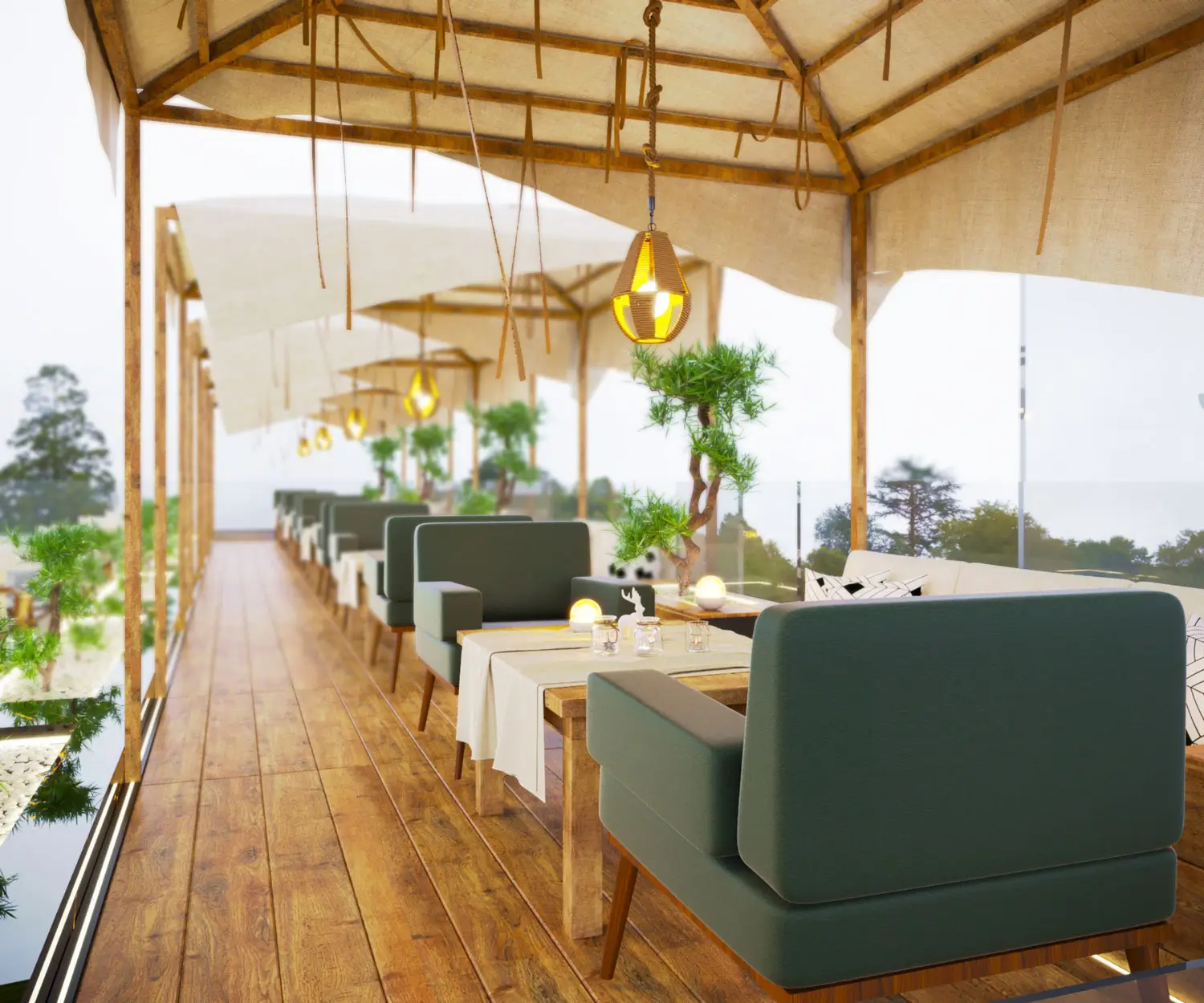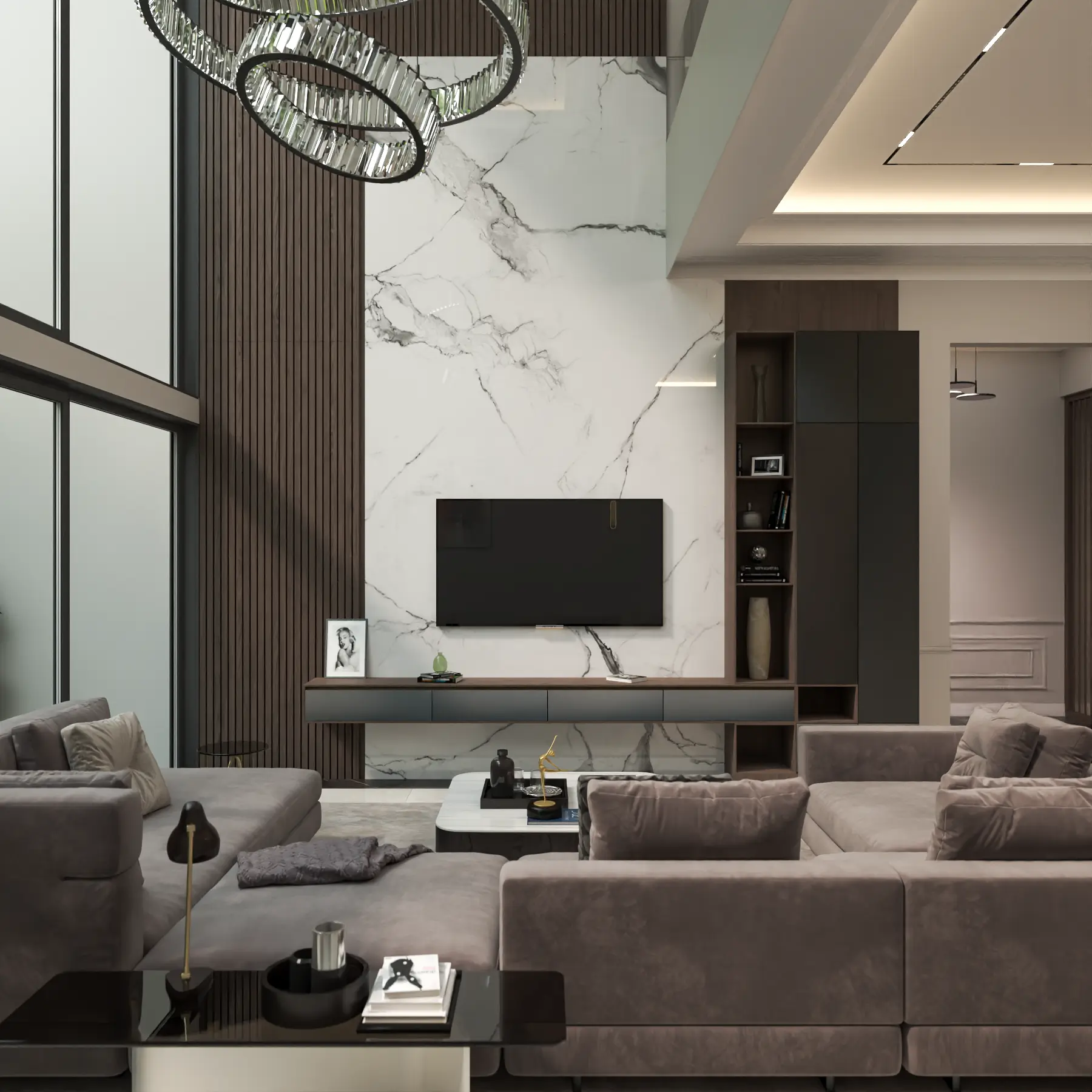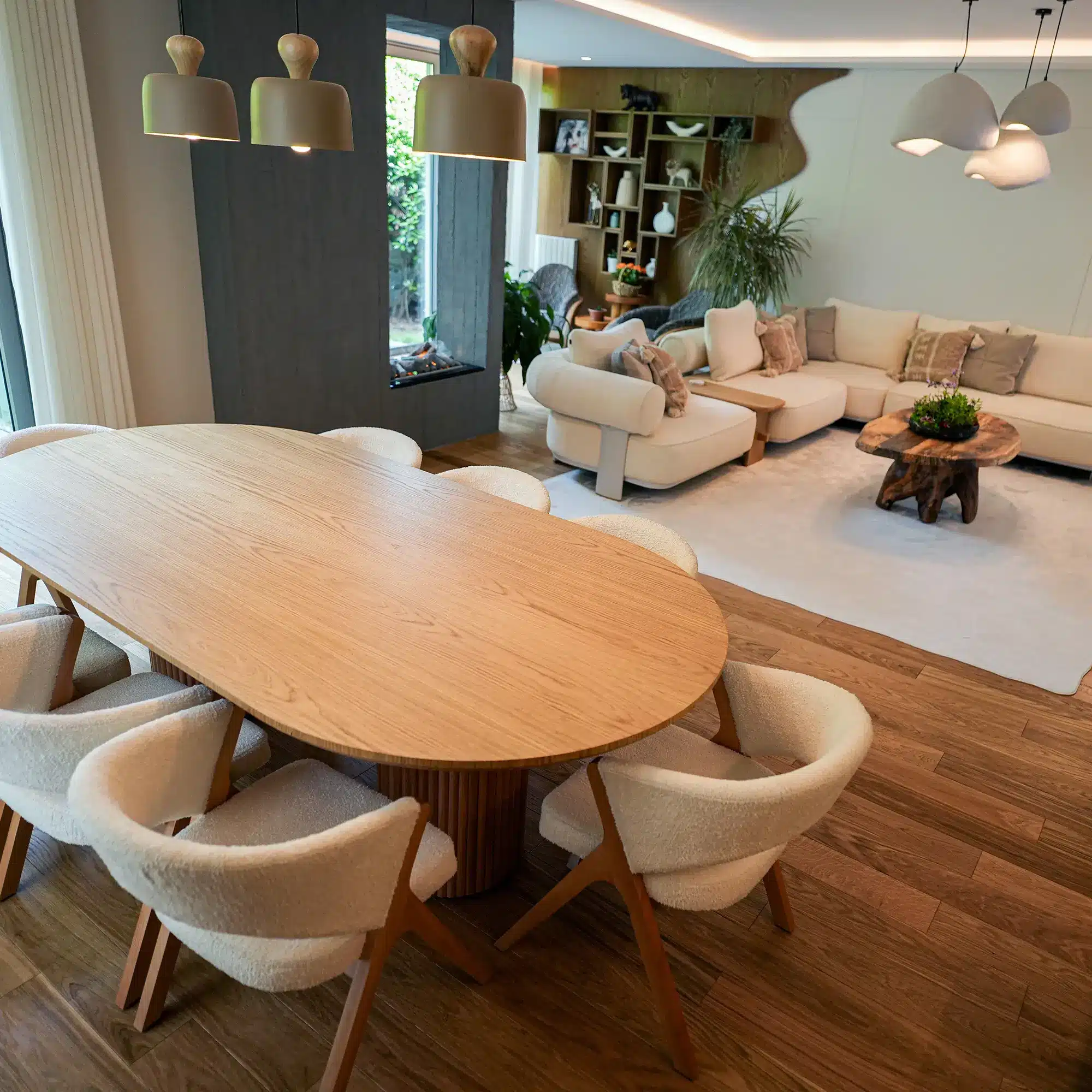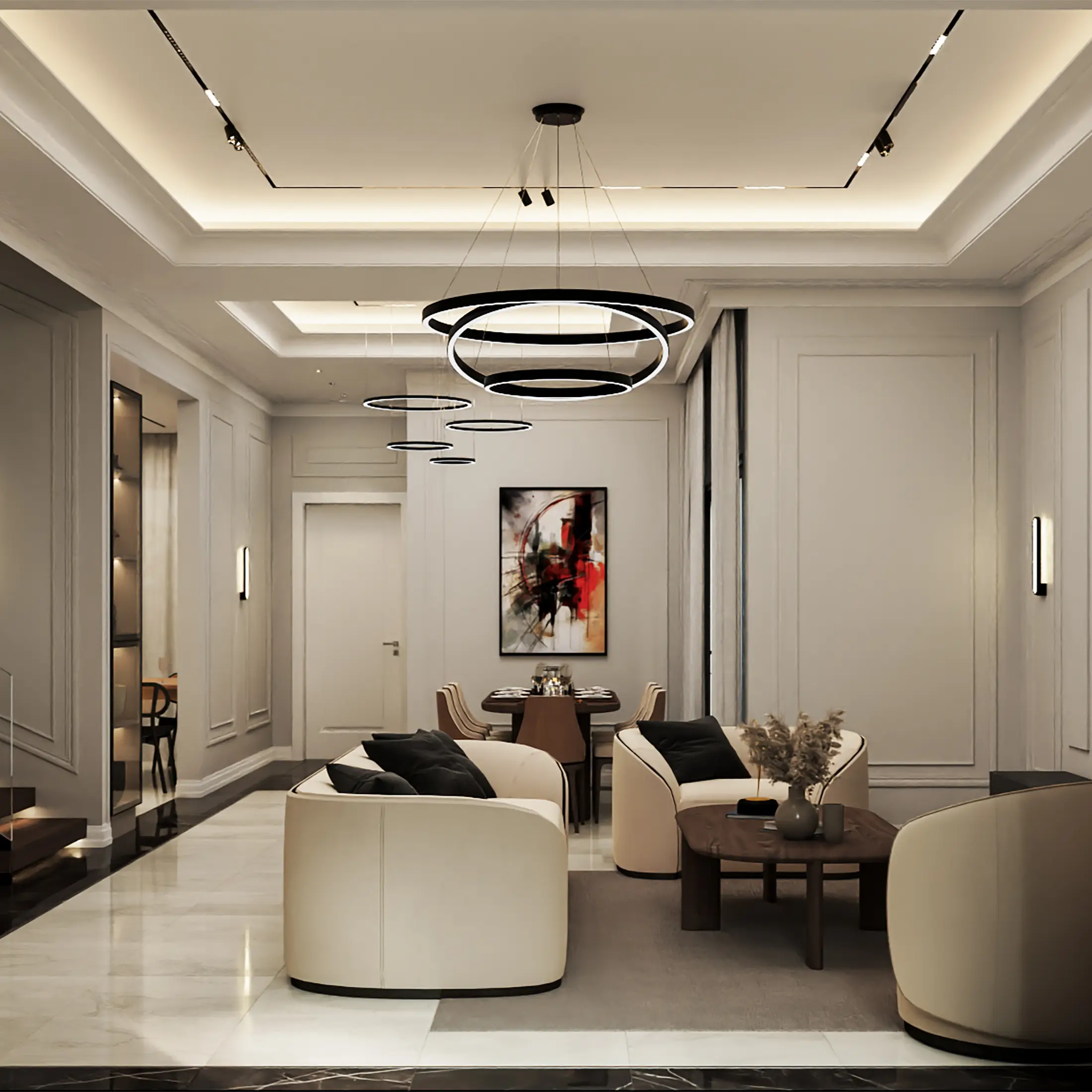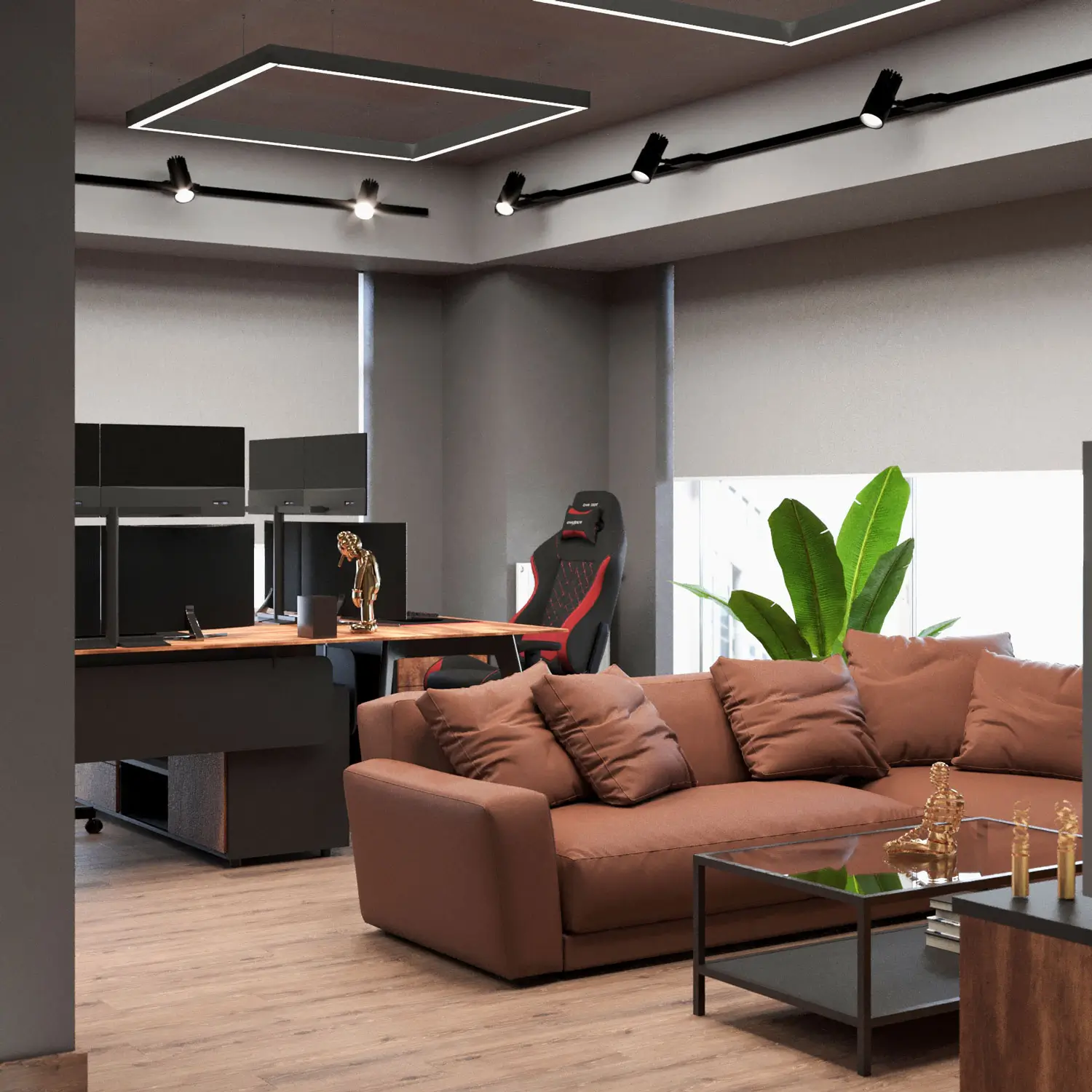Anatolia Restaurant and Dining Design | Frankfurt, Germany
General Information
Restaurant Designis the art of revealing the spirit and character of a space, offering customers a unique experience with every detail. This project encompasses the restaurant design and renovation of Anatolia Restaurant located in Frankfurt, Germany. Through the restaurant design concept, we redefined the aesthetic and functional features of the space. The primary aim of the project is to provide customers with an unforgettable dining experience through the strategic use of interior design. While aiming to create a spacious and inviting atmosphere, details reflecting the rich culture and warmth of Turkish cuisine were highlighted. This created a space where customers could enjoy delicious meals and spend time in a comfortable and enjoyable environment.
Contents
- Design Elements Used
- Branding Point: Back Wall
- Things to Consider in Small Restaurant Design:
- Customer Comfort
- Creative Design Solutions
- Functionality of the Space
- Attractive and Memorable Dining Experience
- Incorporation of Brand Elements
Duet Design Architecture also designed the second branch of this restaurant. for small kitchens, via this link.
Client Requirements
The most important request from Anatolia Restaurant was the redesign of a small restaurant with a functional layout. Restaurant Design During the process, maximizing the use of the existing space and minimizing costs were established as fundamental requirements. The client also wanted the restaurant to acquire a more modern and attractive appearance, but without exceeding the budget for these changes. Therefore, every corner of the space was carefully evaluated to ensure the most efficient use possible. Every detail, from seating arrangements to kitchen equipment placement, was planned to balance functionality and aesthetics.
If you are interested in restaurant design, don't miss in Marburg, Germany.
Design Elements Used
Cream, light colors, and shades of gray were used to make the restaurant visually appear larger. This color palette provided a fresh and clean look for the restaurant design while adding a sophisticated atmosphere to the space. Large and tall windows allowed natural light to enter, contributing to a bright and inviting atmosphere in the space. In selecting the furniture, pieces carefully chosen to ensure the most efficient use of space were preferred. These furniture pieces were selected to fit the space both functionally and aesthetically. Easily movable and multifunctional furniture allowed for the creation of a flexible layout.
You can view the interior design project of the Yalıkavak restaurant in Bodrum at this link.
Branding Point: Back Wall
The back wall of the restaurant was designed to be in harmony with the main counter and created a photo shoot area for brand promotion. This feature provided both a functional and aesthetic solution during the restaurant design process. It allowed customers to capture and share their experiences while enjoying traditional Turkish dishes on social media, thereby increasing the restaurant's visibility and accessibility. The back wall offered a striking visual experience, showcasing the restaurant's brand and becoming a distinctive element of the space. The special lighting and decorative elements used in this area gave the space a unique character and were designed to attract the attention of customers.
Don’t miss our article about the different types of countertop stones.
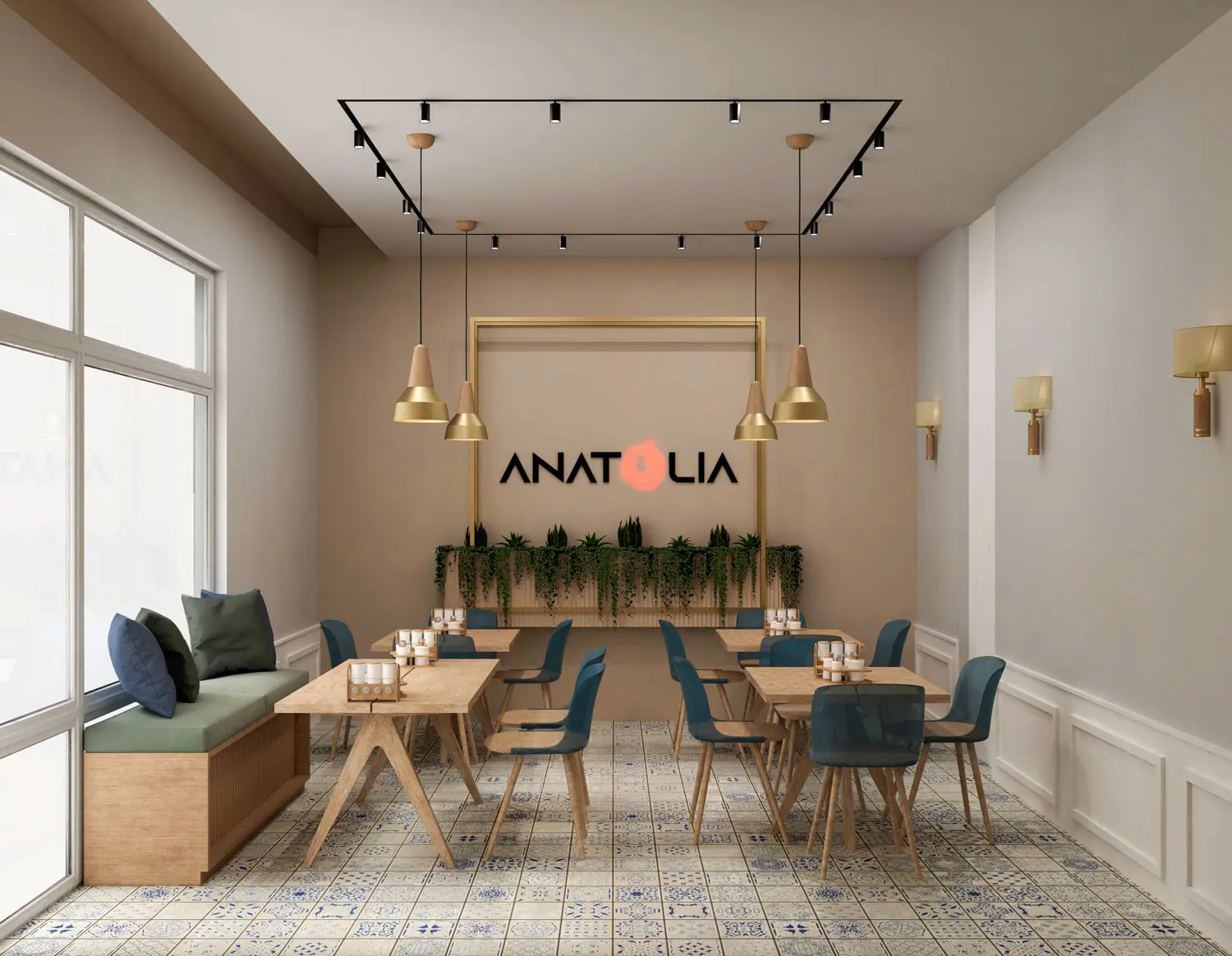
Things to Consider in Small Restaurant Design:
Customer Comfort
One of the most important factors to consider in small restaurant design is customer comfort. During the restaurant design process, it is essential to create comfortable seating arrangements to ensure the comfort of the patrons. This can be achieved by using ergonomic chairs and comfortable benches. Additionally, providing adequate lighting and creating a pleasant environment are also critical for customer satisfaction. By using natural light sources and warm-toned artificial lighting, you can ensure that the space has a more inviting and comfortable atmosphere. As a result, focusing on customer comfort significantly enhances the overall dining experience of the restaurant.
Creative Design Solutions
To make the most of the existing space, it is essential to use creative design solutions. In restaurant design, the effective use of elements such as colors, lighting, and furniture selections is crucial. Light and neutral colors can make the space appear larger and more open. Additionally, flexible and portable furniture allows the space to be easily adapted to different usage scenarios. Moreover, well-placed lighting fixtures ensure that the space is utilized in the best possible way both functionally and aesthetically. These creative solutions help small restaurants achieve maximum efficiency in their use. 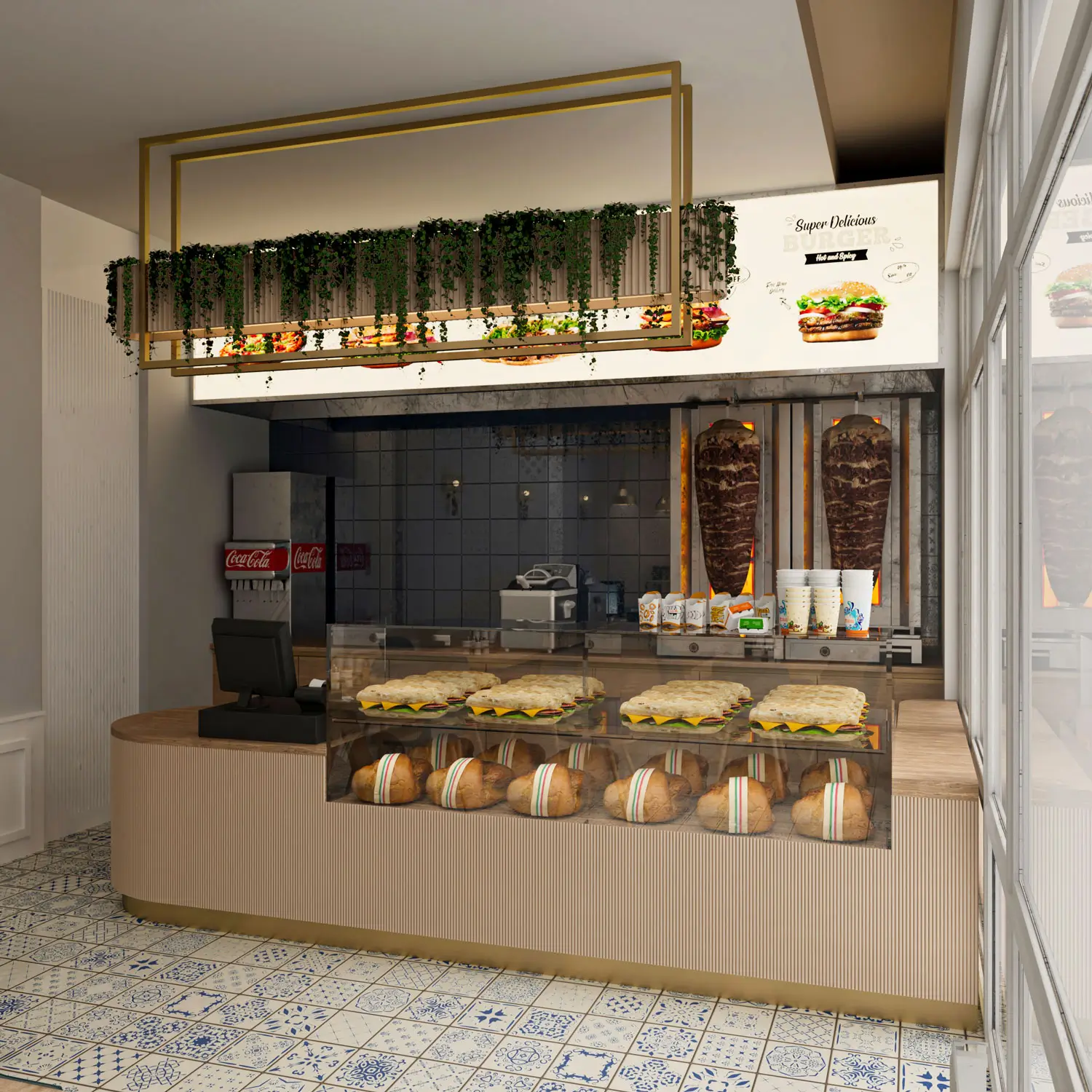
Functionality of the Space
During restaurant design, the functionality of the space must be considered. This involves carefully planning elements such as equipment placement, seating arrangement, and pedestrian traffic flow. The placement of kitchen equipment should be optimized to enable efficient staff work. The seating arrangement should be designed so that customers can move comfortably and interact with each other. Additionally, pedestrian traffic flow is important; proper arrangements should be made to ensure that customers can enter and exit easily and that service staff can move smoothly. By prioritizing functionality, it is possible to ensure that the restaurant operates at its best for both staff and customers.
Attractive and Memorable Dining Experience
To provide customers with an attractive and memorable dining experience, the effective use of interior design is crucial. When designing a restaurant, elements such as lighting, colors, and decoration must be carefully selected. Warm and inviting colors positively impact the restaurant's atmosphere, while strategically placed lighting fixtures can create different ambiances in various areas of the space. Decorative elements should be chosen to align with the restaurant's concept and should aim to visually impress customers. In this way, not only the food but also the overall experience becomes unforgettable for customers.
Incorporation of Brand Elements
Incorporating brand elements into the design is a critical step to enhance the restaurant's identity and recognition. During restaurant design, eye-catching elements such as a prominent wall or artwork can be added to promote the brand and increase visibility on social media. For example, the back wall of Anatolia Restaurant can be decorated with a unique design to create a space where customers can take photos and share them on social media. This not only enhances the aesthetic value of the restaurant but also boosts brand awareness and customer engagement. Strategically incorporating brand elements into the design strengthens the restaurant's market position and increases customer loyalty.
What is the concept of Anatolia Restaurant's diner design?
The concept of Anatolia Restaurant's diner design aims to redefine the aesthetic and functional features of the space. With details reflecting the rich culture and warmth of Turkish cuisine, a fresh and inviting atmosphere is created. This concept aims to provide customers with an unforgettable dining experience.
What elements were considered during the diner design process?
During the diner design process, maximizing the use of space and minimizing costs were fundamental aspects. Additionally, the restaurant was given a more modern and attractive appearance. Every detail, from the seating arrangement to the placement of kitchen equipment, was carefully planned for both functionality and aesthetics.
Why is the back wall of Anatolia Restaurant important?
The back wall of Anatolia Restaurant was designed to complement the main counter and create a photo backdrop for brand promotion. This area allowed customers to share their experiences on social media, increasing the restaurant's visibility and reach. Additionally, the back wall provided a striking visual experience, making it a standout feature of the space.
What was the color palette used in the restaurant design?
In the restaurant design, cream, light colors, and gray tones were used to make the space visually appear larger. This color palette provided a fresh and clean look while adding a sophisticated atmosphere to the space. When combined with large windows that allow natural light to enter, the space becomes brighter and more inviting.
How was the design of the second branch of Anatolia Restaurant carried out?
As Duet Architectural Design, we designed the second branch of Anatolia Restaurant with the same attention to detail. This branch was also redesigned with a focus on functionality, aesthetics, and customer satisfaction. While ensuring the most efficient use of the existing space, costs were kept under control, and a modern appearance was achieved. You can access the project page via this link.
